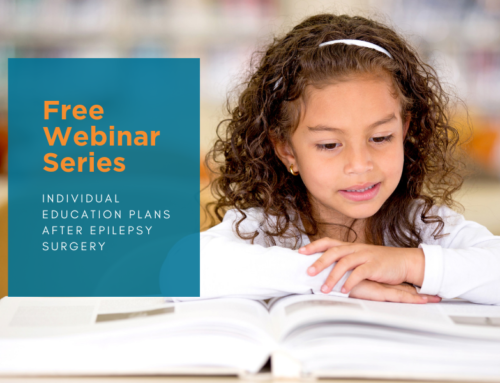WHY COMPREHENSIVE READING ASSESSMENTS ARE IMPORTANT AFTER HEMISPHERECTOMY SURGERY
What is developmental dyslexia?
Developmental dyslexia is a disorder of reading acquisition. Children and adults with developmental dyslexia have difficulty reading single words accurately and/or fluently and may transpose letters or meanings of words. They may read ‘house’ as ‘horse’, ‘view’ as ‘scene’, ‘bird’ as ‘canary, ‘run’ as ‘running’, or ‘governor’ as ‘government. It differs from the more common phonological dyslexia, where the reader is unable to sound out words (especially nonsense words), and surface dyslexia, where the reader cannot retrieve the pronunciation of a word from memory but must instead sound it out each time.
Although reading is typically a function primarily of the left hemisphere of the brain, research shows those with developmental dyslexia show impaired left hemisphere reading function and thus attempt to use circuits in their right hemisphere to read.
The Right Hemisphere’s Ability To Read Alone
To further understand the right hemisphere’s ability to read, eleven children who had hemispherectomy to stop intractable seizures caused by in utero and post-natal stroke were compared to eleven individuals who had developmental dyslexia. All participants had an IQ of 75 or over. Assessments that evaluated receptive vocabulary, untimed single word reading and decoding, timed single word reading and decoding, comprehension were used.
Researchers hypothesized that reading challenges would be similar because both were using right hemisphere reading circuits to attempt to read. Surprisingly, this was not the case. Instead, there were differences not only between the left hemispherectomy and deep dyslexia groups, but between the participants in the left hemispherectomy group as well.
- Readers who had left hemispherectomy for in utero stroke did not differ significantly from readers with developmental dyslexia on untimed word reading, but performed better than those with developmental dyslexia ontimed reading;
- Readers with developmental dyslexia and left hemispherectomy for in utero stroke generally outperformed readers with left hemispherectomy for post-natal stroke, but there were outliers in the hemispherectomy group.
Researchers concluded that readers with developmental dyslexia and hemispherectomy for in utero stroke may rely on similar reading networks in the right hemisphere, but because the readers with hemispherectomy for post-natal stroke outperformed those with developmental dyslexia under timed conditions, having only a single right hemisphere can be advantageous in this scenario.
The Importance of Comprehensive Reading Assessments
Most interesting were the differences observed in the post-hemispherectomy group. Despite their strong similarities (all the children had left hemispherectomy for stroke), some readers showed “strengths in real word reading only, others on both real and pseudo-word reading, and some participants showing relative improvement reading under time constraints.” These differences caused researchers to stress the importance of comprehensive reading assessments in this population:
“These individual strengths call for flexible literacy instruction based on standardized assessments that analyze individual strengths and are used to generate intervention strategies.”
Educators should be sure to conduct comprehensive reading assessments of children after hemispherectomy surgery to reveal the child’s strengths. Reading instruction methodologies should play to those strengths, and the reading instructor should be prepared to change instruction methods if needed.




























Leave A Comment
You must be logged in to post a comment.